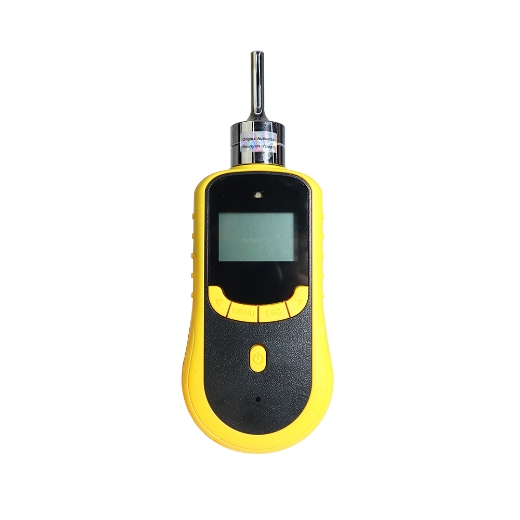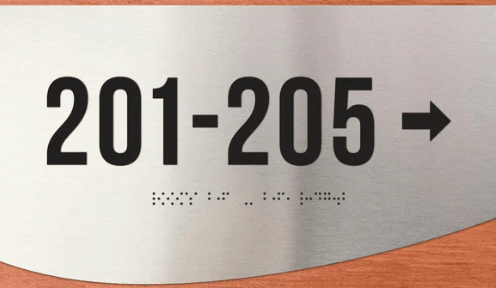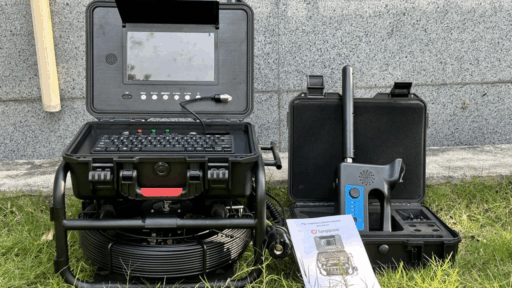Every year, residential gas leaks lead to fires, explosions, and poisoning incidents that could have been prevented. According to the National Fire Protection Association (NFPA), gas-related home incidents still account for thousands of emergency responses annually—many involving homes without a functioning gas detector.
With more homes relying on gas-powered appliances—whether LPG (Liquefied Petroleum Gas) for cooking or natural gas for water heaters—the importance of having a proper gas detector is more urgent than ever.
But choosing the right one can be confusing. Should you install an LPG detector, a natural gas (methane) detector, or a newer dual-sensor model? In this guide, we break down the key differences, explain how each gas behaves indoors, and help you decide which type of detector is best for your home in 2025.
LPG vs. Natural Gas: What’s the Difference?
Feature | LPG (Liquefied Petroleum Gas) | Natural Gas (Methane, CH₄) |
|---|---|---|
Common Use | Bottled gas for stoves, RVs, small kitchens | Piped gas via municipal lines |
Density | Heavier than air | Lighter than air |
Leak Behavior | Sinks and accumulates near the floor | Rises and collects near ceilings |
Detection Location | Low installation (near floor) | High installation (near ceiling) |
Both are widely used in residential settings. In some homes, one might power the stove while the other fuels the water heater. This makes the case for WiFi Gas Leak Detectors for LPG and Natural Gas (dual-sensor gas detectors), which can detect both gases simultaneously, increasingly compelling.
What Type of Gas Detector Do You Need?
Choosing the right detector depends on your home’s energy source and layout. Here’s a quick overview:
- LPG Detectors – Best for homes using propane tanks or butane for stoves, ovens, or RV setups.
- Natural Gas Detectors – Suitable for homes connected to city gas lines.
- Dual-Sensor Detectors – Ideal for mixed-fuel homes, rental units, or if you’re unsure which gas is used.
Tip: If you’re renting or managing multiple units, or simply want maximum protection, go for a dual-sensor monitor (LPG & Natural Gas).
Key Factors to Consider When Choosing a Detector
- Gas Type Detection
Ensure the detector matches your gas source—or better yet, supports both. - Installation Position
Since LPG is heavier, detectors should be placed low (30 cm from the ground). Natural gas requires ceiling placement (15–30 cm from ceiling). Dual-gas detectors often have flexible installation heights. - Alarm Mechanism
Look for models with loud audible alarms (≥85 dB), visual LED indicators, and Wi-Fi alert capability if remote monitoring is needed. - Power Source
- Plug-in models are easy to install but depend on grid power
- Battery-backup or DC-powered units are safer during outages or in mobile homes
- Certifications & Safety Compliance
UL, CE, RoHS, and IP ratings add assurance that your detector meets international standards.
Why Consider a Dual-Sensor Gas Detector?
Here are some key benefits of using a dual-sensor detector in 2025:
- Covers both LPG and Natural Gas
No need to guess what fuel is used in your home. - Future-proof for fuel switching
If your fuel source changes (e.g., from LPG to NG), the same detector continues to work. - Ideal for rental properties and Airbnb
Ensure safety without knowing the tenant’s fuel type. - Compact and affordable
Most models are plug-and-play and cost under $60 USD.
Product Spotlight: GasDog Dual-Sensor Home Gas Leak Detector
While this guide is independent, one widely reviewed product that fits the above criteria is the GasDog WiFi Gas Leak Monitor for LPG and Natural Gas, available at gasdog.com. It supports both LPG and CH₄ detection, and comes with smart alert functions.
Feature | GasDog Dual-Sensor WiFi Detector |
|---|---|
Supported Gases | LPG + CH₄ (methane) |
Detection | Semiconductor + auto-recognition |
Alerts | Loud 85dB sound + LED + optional Wi-Fi alerts |
Install Options | Plug-in or wall-mount |
Smart Features | Wi-Fi alerts, remote diagnostics, self-test |
Use Cases | Home kitchens, garages, RVs, gas boiler rooms |
Installation takes less than 10 minutes, and Wi-Fi-enabled versions can send alerts to your smartphone.

Where Should You Install a Gas Detector?
Location | Recommended Gas Detector | Mounting Position |
|---|---|---|
Kitchen with LPG | LPG / Dual-Sensor | Near floor, 30cm up |
Gas heater room | NG / Dual-Sensor | Near ceiling, 15cm down |
RV or mobile home | Dual-Sensor | Both high and low |
Mixed-use apartment | Dual-Sensor | Flexible based on layout |
Product Comparison: Dual-Sensor vs. Single-Gas Detectors
With dozens of gas detectors on the market, many homeowners wonder: “What’s the best detector for both LPG and natural gas in 2025?” Below, we compare some of the most popular models by sensor type, coverage, and smart features.
Brand / Model | Sensor Type | Detects Both LPG & NG | Smart Alerts | Typical Price (USD) |
|---|---|---|---|---|
GasDog Dual-Sensor | Semiconductor (Auto Recognition: LPG / NG) | Yes (✔) | Optional Wi-Fi ✔ | $70–$80 |
Kidde Nighthawk (KN‑COEG‑3) | Electrochemical (CO + Combustible Gases incl. Methane & Propane) | Yes (✔) | No (✘) | $34–$65 |
First Alert GCO1CN | Electrochemical (CO + Explosive Gases) | Yes (✔) | No (✘) | $55–$75 |
X-Sense GD01 | Semiconductor (LPG Only) | No (✘) | No (✘) | $30–$45 |
If you want flexibility and future-proofing, dual-sensor detectors offer a better return on safety investment.
Notes:
- GasDog Dual-Sensor: Actively identifies and responds to either LPG or natural gas leaks. Select models offer real-time smartphone alerts via Wi-Fi and are ideal for homes with mixed or uncertain gas usage.
- Kidde Nighthawk and First Alert GCO1CN: Both support detection of methane (natural gas) and propane (LPG), though marketed mainly for CO + “explosive gas.” These are widely used, UL-certified, and reliable detectors for combustible gases.
- X-Sense GD01: Only detects LPG (propane), and does not support natural gas or remote alerts. It’s suitable for simple, single-gas setups.
As the table shows, while most models cover either LPG or natural gas, only a few offer reliable dual-sensor support. GasDog’s model stands out with both affordability and smart functionality.
Frequently Asked Questions (FAQ)
Q: Can I use the same detector for both LPG and natural gas?
Only if it’s a dual-sensor model. Otherwise, separate detectors are needed.
Q: How often should I replace or test the detector?
Most gas detectors have a 2–3 year lifespan. Monthly testing is recommended.
Q: Do Wi-Fi gas detectors work during power outages?
Wi-Fi models require power. Some come with battery backup or DC input for safety during outages.
Q: Is it suitable for RV or camper vans?
Yes, compact plug-in or wall-mount detectors with dual-gas support are ideal for mobile setups.
Conclusion: Smart Safety Starts with Smart Detection
As homes become smarter and more energy diverse, gas safety technology is evolving too. Whether you’re using LPG, natural gas, or both, the right gas leak detector can protect your family from invisible but deadly threats.
In 2025, dual-sensor detectors stand out for their coverage, cost-effectiveness, and ease of use. Whether you choose a model like GasDog or another reputable brand, the key is to ensure full protection—no matter which gas you’re using today or tomorrow.








